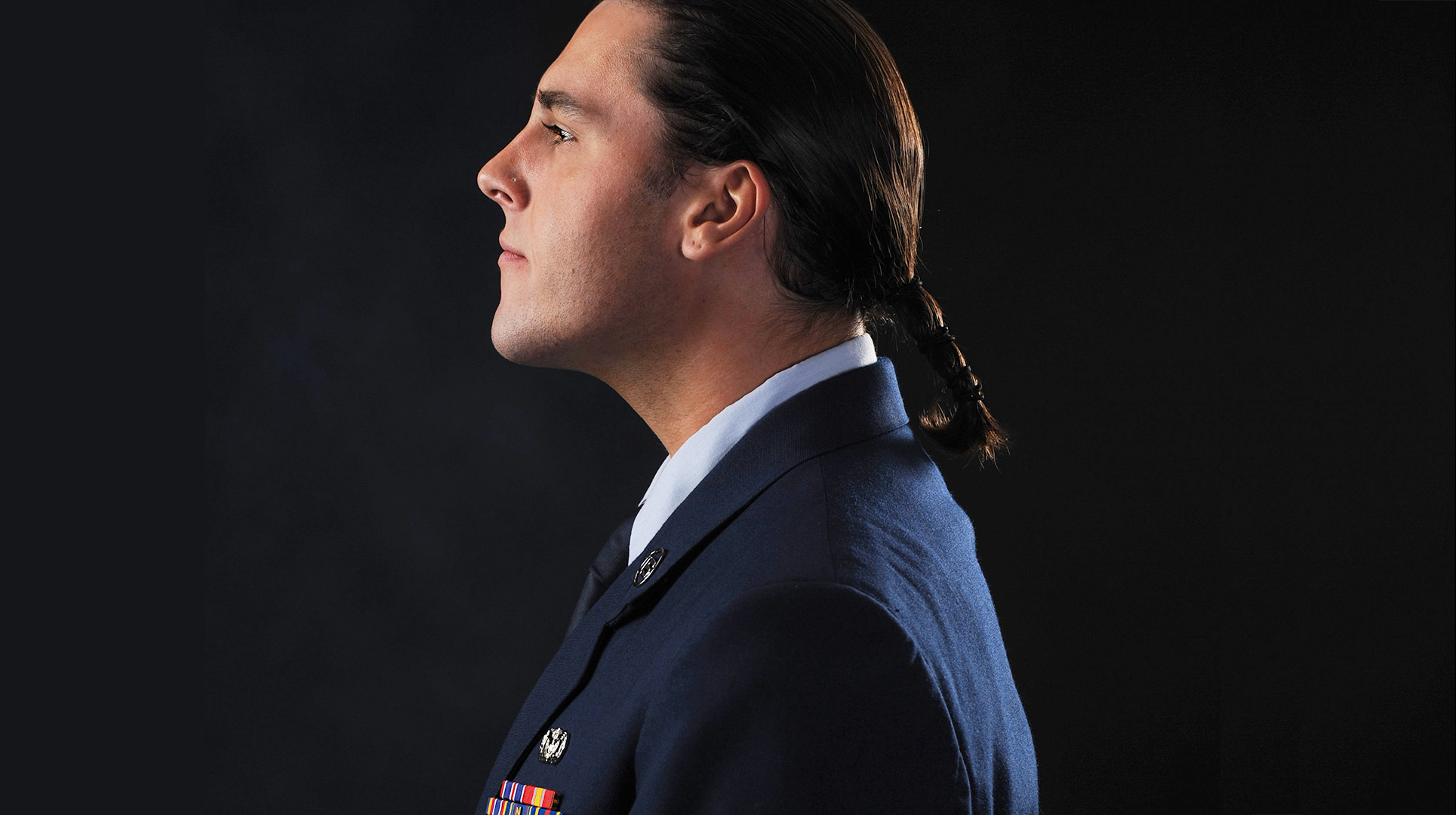

Connor Crawn celebrated receiving a religious accomodation to wear his hair in a distinctive braid by making a Tik Tok video. He was, he believed, the first Native American in the U.S. military to win the right to wear his hair in a long braid as a symbol of his indigenous heritage and faith.
“Not a lot of people understand or know what hair length or having long hair means in a lot of different native cultures,” Crawn said in the video which had nearly 24,000 views and over 2,000 comments. “This is a huge deal, because as far as I know, within modern United States military history, I’m the first Native American to be approved a religious accommodation request.”
Crawn is Kanien’kehà:ka, or the Mohawk Nation, one of the five nations of the Iroquois, whose origins trace to an area in and around present-day upstate New York and Montreal, Canada. Since he announced the approval of his religious accomodation, he said, dozens of Native men in the Air Force, Army and Marines to reach out to him for mentorship, including through his Tik Tok video.

He also helped eleven others receive their own religious accommodation requests, according to an Air Force news release.
The exemption, granted in October 2022, was approved by the Air Force’s Surgeon General Lt. Gen. Robert I. Miller.
Crawn’s exemption allows him to keep his hair in compliance with the service’s female hair standards, which lets him keep it “long enough to gather into a braid or ponytail to be worn down his back,” the Air Force said.
Subscribe to Task & Purpose Today. Get the latest military news and culture in your inbox daily.
Crawn is assigned to the 341st Missile Security Operations Squadron, at Malmstrom Air Force Base, Montana, one of the highly-trained security units that guard the nuclear weapons and missile silos at Malmstrom.
Not all voices around him have been supportive. Crawn said in the release that he’s endured a barrage of “unfiltered comments” from veterans online who link his hair exemption as “the downfall of the U.S. armed forces.”
“It honestly doesn’t faze me hearing those old-school vets speak so low of me and our ‘current Air Force,’” he told the Air Force. “I was raised to be resilient and proud of who I am. I think the naysayers should keep the negativity to themselves, especially if they can’t recognize the beauty in diversity.”
American Indians and Alaska Natives serve in the U.S. military at five times the national average and have the highest military service per capita compared to other ethnic groups, according to the release.
At public education presentation this week, Jennifer Dubina, a museum educator at the National Museum of the U.S. Army described forced Native American assimilation in the 19th century where Native children were required to cut their hair to match European standards in U.S. government-run boarding schools.
Former Civil War Army Gen. Richard Henry Pratt opened the first school and organized them with a military-like structure due to his background. By the early 20th century, 83% of indigenous school-aged children attended these schools, Dubin said.
“[Our hair] is a representation that we are still here. Here we are today, still wearing our hair in braids like our ancestors. We are upholding our past as Native people, despite going through so much oppression in North America,” Crawn said in the Air Force release.
Crawn is also part of a group trying to streamline the process across the military and help other Native troops “be able to keep or regrow our hair,” Crawn said on TikTok.
“For the most part, it’s just looks,” he described of the attention he received from fellow service members. “And then you have higher leadership…who are not so keen to be polite, but you take it with a grain of salt because you understand they have been in for so long and things have always been the same way.”
Airmen and recruits can submit pre-accession exceptions for religious accommodations for dress, immunizations, diet, and worship before entering the Air Force.
The latest on Task & Purpose
- Report: Special operations forces need to rethink language training
- US sends a warning with 2 aircraft carriers in the Mediterranean at the same time
- The Army’s 10 best scare badges, ranked
- Recon Marines will use electric dirt bikes on next deployment
- What it’s like to be stationed at Diego Garcia
